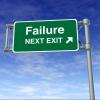Related Content
 |
Finding the Bottlenecks in the Agile and DevOps Delivery Cycle To achieve incremental software development and continuous feedback, you need to eliminate the tasks that create bottlenecks, which hinder the flow of development. A chain is no stronger than its weakest link, and identifying these “weak links” is a critical step toward achieving agility and increasing efficiency. |
|
 |
In Praise of Failure Failure is measured by expectations. If we aim to be perfect, or set the expectation that only perfection is acceptable, we risk losing opportunities to get valuable feedback. Creating an expectation of perfection can lead to stagnation, not success. Instead, view failure as a learning experience. |
|
 |
Manage Project Problems without Getting Trapped by Catastrophic Thinking It would be short-sighted for any project manager not to consider the potential risks in the project and not to evaluate and continue re-evaluating what can go wrong. But there's a difference between planning for risk and falling victim to catastrophic thinking—focusing on unlikely or irrational worst-case scenarios. |
|
 |
Before You Can Eliminate Agile and DevOps Bottlenecks, You Need to Identify Them Agile and DevOps, which now dominate software development, lean on continuous integration, continuous testing, and continuous deployment. Because of that, anything that might break this iterative and continuous cycle could throw everything out of whack and stunt your team’s growth. |
|
 |
Think Small: Break Down User Stories for Agile Success The entire agile team needs to be involved in a continuous process of identifying ways to simplify work, right up until a story is complete. Smaller stories ensure that development work is rapid and trackable. Mitch Goldstein details how to focus on breaking stories down into a more estimable, “digestible” size. |
|
 |
How Testers Can Create a Change in Mindset With all of the changes happening in the testing world and what is expected in order to succeed, one of the things that is needed is a change in mindset. Today’s testers need to be able to think outside traditional system requirements and instead focus on end user expectations and market acceptance. |
|
 |
Tester Contributions to Scrum Conversations Scrum is one of the most popular paths to agile, but testers sometimes join this framework as an afterthought and aren’t quite sure how they fit into the development flow. Scrum is more than answering three daily questions, and testers are in a position to understand the project better than anyone else on the team. |
|
 |
How Agile, DevOps, and Continuous Integration Changed Software Architecture For the longest time, software architecture was something you built, adapted to your team or situation, and left in place—the old “if it ain’t broke, don’t fix it” mentality. Now, more rapid changes aren’t just expected, they’re necessary. |







